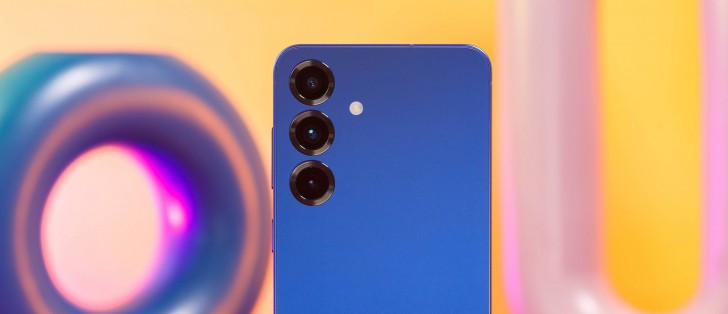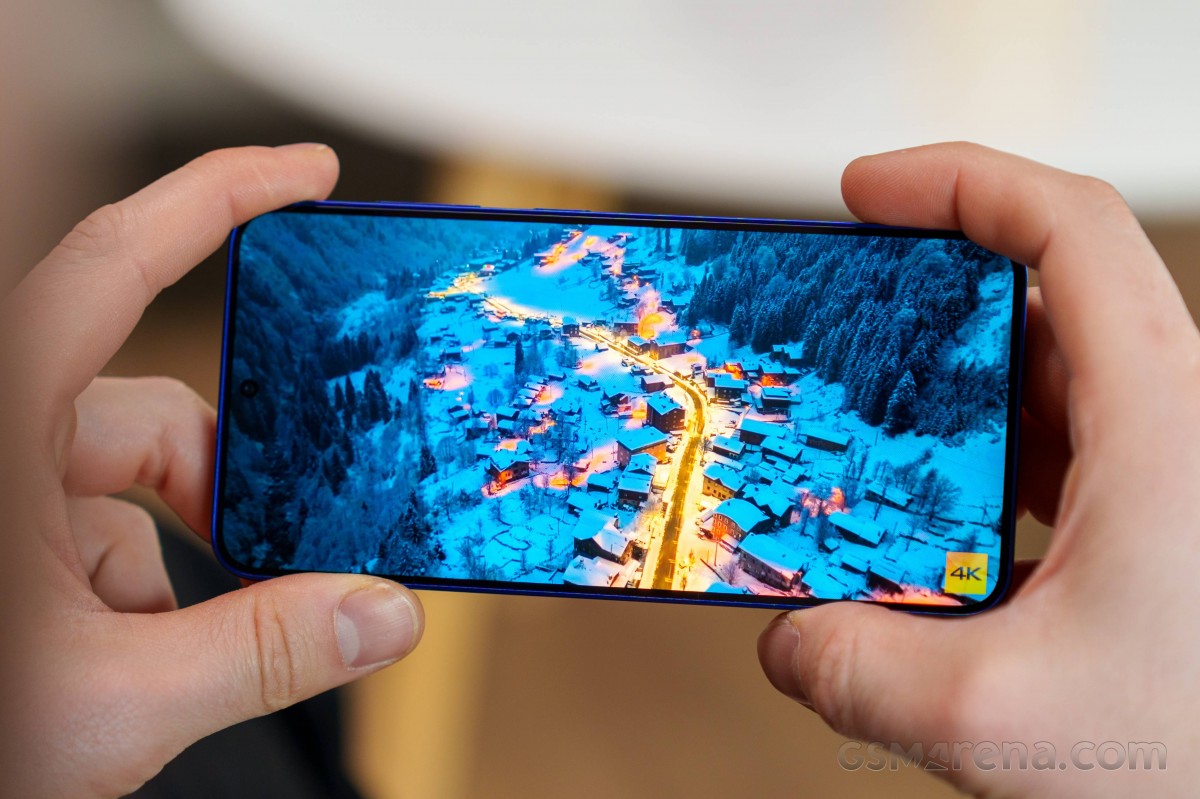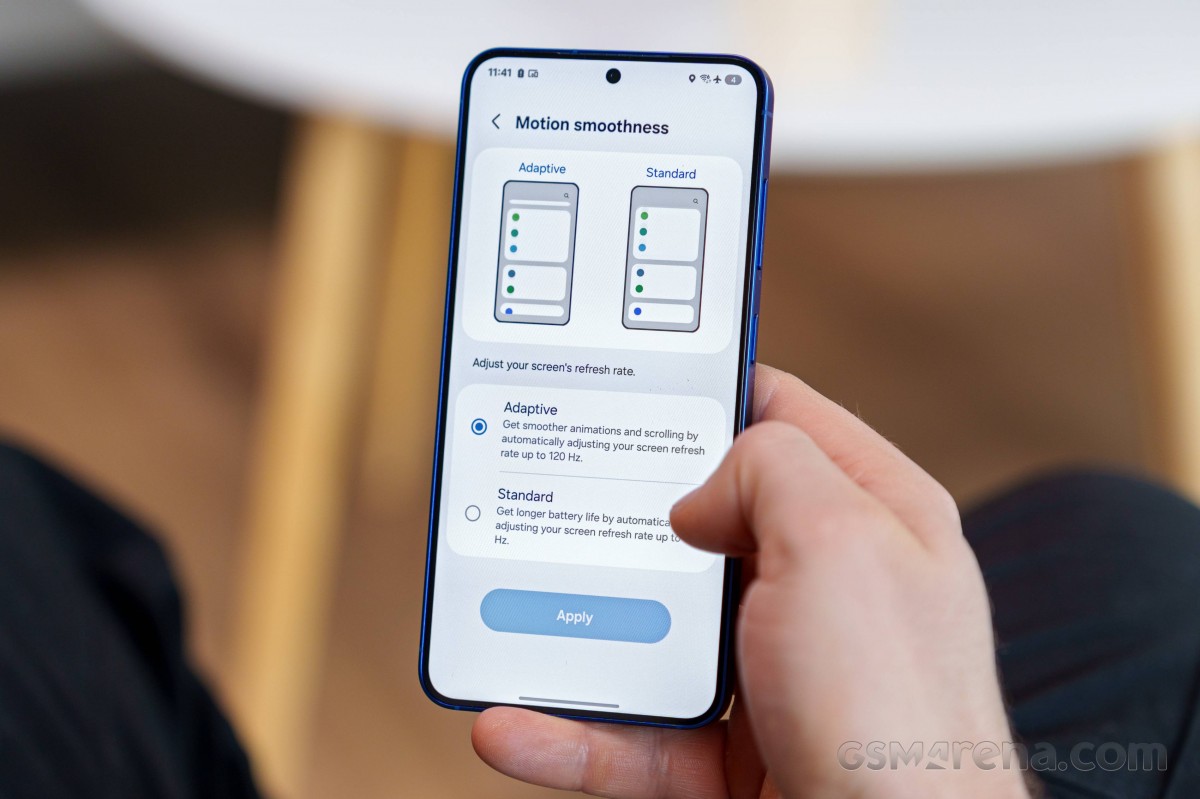Samsung Galaxy S25 review

Display
The Galaxy S25 has an identical display to the Galaxy S24 - a 6.2-inch Dynamic AMOLED 2X panel with 1,080 x 2,300 pixels, up to 120Hz refresh rate, and HDR10+ support.

The screen has a small punch hole and is shielded with a Gorilla Glass Victus 2 sheet.
According to Samsung, the maximum peak brightness is also unchanged since last year - 2,600 nits.
Well, our display measurements unfortunately confirmed that there are no surprises, and nothing has changed since the Galaxy S24.
The maximum brightness when controlling it manually was 438 nits without boost and 747 nits with the extra brightness boost. This is slightly lower than the Galaxy S24 and S23 screens.
The maximum automatic brightness we captured on the Galaxy S25 was 1,395 nits, about the same as on the Galaxy S24 and higher than the Galaxy S23.
The minimum brightness at point white was 1 nit, which is great.
The Galaxy S25 offers two refresh rate modes - Adaptive and Standard. Do not let these descriptions fool you, as, in fact, both modes are adaptive and will continuously switch refresh rates, but only the Adaptive one maxes out at 120Hz, while Standard is limited to 60Hz.

The Adaptive mode is, well, more adaptive by trying to better match Hz to the fps of the currently playing videos, while Standard will fix the refresh rate at either 30Hz or 60Hz for most videos.
The screen drops to the minimum of 1Hz for static content, no matter the mode. And it will work at 120Hz in compatible games.
Finally, the small Galaxy S25 supports HDR10 and HDR10+ - no Dolby Vision video here, as usual. YouTube served us HDR streams and so did Netflix, in FullHD too, thanks to the Widevine L1 compliance.
The Galaxy S25 also supports the Android Ultra HDR standard and will boost highlights for metadata-enhanced photos taken on it, or on other standard-abiding handsets. It works in the in-house Gallery, as well as Google Photos and Chrome.
Battery life
The Samsung Galaxy S25 draws power from the same 4,000 mAh battery as last year and uses the same 6.2-inch OLED display. The only change from a hardware perspective is the chipset, now supposedly with a more efficient Snapdragon 8 Elite for Galaxy. And, of course, One UI 7.0 software, which is also touted as more efficient too.
Update, 10 Feb 2024: Following further retesting, the game result has been adjusted to a higher figure after the review publishing. We've updated the Active Use score below to reflect the new results.
Battery life as we measure it hasn't changed much from the Galaxy S24. Samsung has been oddly consistent with its numbers. The video playback runtime remains pretty solid and so does the call runtime. The web browsing/social network browsing score leaves more to be desired. And there is a notable improvement is the game runtime, which is something we saw in our S25 Ultra and S25+ reviews, meaning it's probably courtesy of the move to the Snapdragon 8 Elite chip.
Charging speed
There's no change in the charging protocol coming from the Galaxy S24, or the S23, or the S22 for that matter. You get a maximum of 25W using a compatible Power Delivery 3.0 charger with PPS.
The wireless charging is still 15W, but Samsung updated it to be Qi 2.1 ready, which means you get support for magnetic wireless charging accessories, but there are no magnets inside the phone (hence the Ready part) so to use the feature you need a case that has magnets built-in.
Compared to other smartphones on the market that are not Pixels and iPhones, the Galaxy S25 is extremely slow to charge, taking well over 1 hour to top up the battery.
On the plus side, slower charging may be easier on the battery longevity in the long run. Additionally, Samsung offers a few Battery Protection options if you feel that extra care is needed. You can choose between Basic (stops at 100% and starts again after a 5% drop); Adaptive (adjusts by your charging and sleep patterns); or Maximum (you can choose a custom limit 80%/85%/90%/95%).
Speakers
The Galaxy S24 features a hybrid stereo speaker setup, with one speaker positioned at the bottom and the earpiece serving as the second. In typical fashion for hybrid pairs, the earpiece outputs quieter sound emphasizing high and mid-range frequencies, while the bottom speaker delivers rich bass along with clear vocals.
According to our tests, the S25's speakers are a bit quieter than the S24, now achieving a Good -26.1 LUFS loudness score.
We were also able to distinguish some changes in how the Galaxy S25 speakers sound now compared to the S24. We like this year's tuning better, as Samsung brought out more bass. As a result, music tracks sound deeper and fuller than before, but without muffling the mids and highs. Vocals are still very prominent, but the overall sound is richer.
Use the Playback controls to listen to the phone sample recordings (best use headphones). We measure the average loudness of the speakers in LUFS. A lower absolute value means a louder sound. A look at the frequency response chart will tell you how far off the ideal "0db" flat line is the reproduction of the bass, treble, and mid frequencies. You can add more phones to compare how they differ. The scores and ratings are not comparable with our older loudspeaker test. Learn more about how we test here.
Reader comments
- Shiva kumar
- 02 Apr 2025
- rAQ
The image shows a person wearing a bright orange jacket with some text on it, sitting in what appears to be a vehicle. The jacket has a logo or text that includes "MINI" and some other characters, possibly indicating a brand or team affilia...
- Peter Hubz
- 01 Apr 2025
- fu%
I'm quite disappointed by the battery life of this device, drains up so quickly even with minimal usage
- Barista
- 24 Mar 2025
- 6TU
There is something wrong with the battery life. 3nm and a 6.20 inch display but the battery is only 9 hours ? Even Reddit note 9s from 2020 can do higher than that








